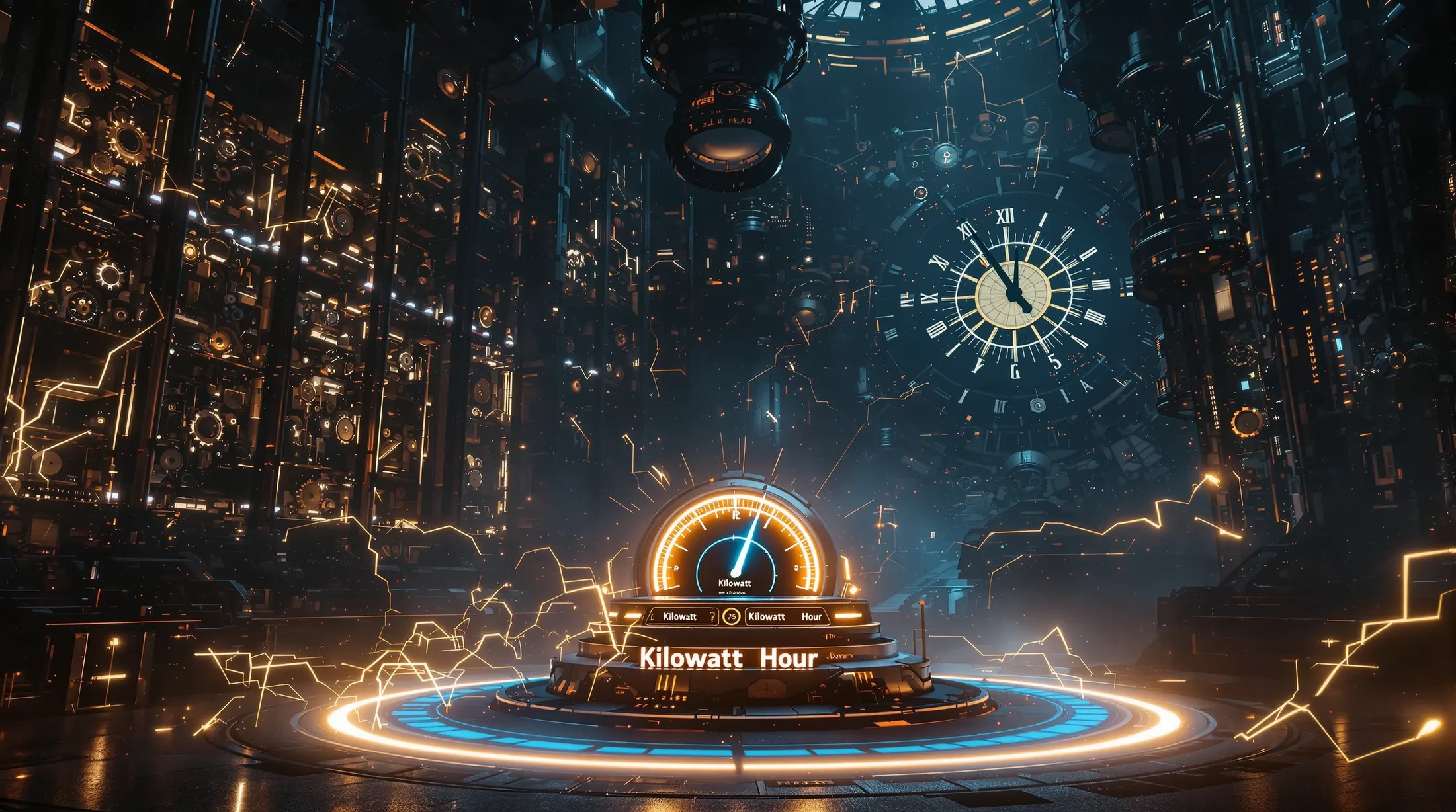Difference between kilowatt and kilowatt hour explained
Managing your electricity costs effectively starts with understanding two fundamental electrical measurements: kilowatts (kW) and kilowatt-hours (kWh). Let’s explore these concepts to help you make informed decisions about your energy consumption and better understand your utility bills.
Understanding the Difference Between Kilowatt and Kilowatt Hour
While kilowatts and kilowatt-hours may sound similar, they measure distinctly different aspects of electricity. Kilowatts measure power – the instantaneous rate of energy consumption, while kilowatt-hours measure the total energy used over time. Think of power (kW) as speed and energy (kWh) as distance traveled.
What is a Kilowatt?
A kilowatt (kW) represents 1,000 watts of power, measuring the rate of electricity consumption at any given moment. It indicates how much electrical power a device can use when operating at full capacity.
- Microwave – 1.2 kW (1,200 watts)
- Hair dryer – 1.8 kW (1,800 watts)
- LED light bulb – 0.01 kW (10 watts)
What is a Kilowatt Hour?
A kilowatt-hour (kWh) measures total energy consumption over time. One kilowatt-hour equals the energy used when consuming one kilowatt of power for one hour. This is the unit you’ll see on your electricity bill.
| Appliance | Power Rating | Usage Time | Energy Consumed |
|---|---|---|---|
| Electric Heater | 2 kW | 3 hours | 6 kWh |
| Light Bulb | 0.1 kW | 10 hours | 1 kWh |
How Kilowatts and Kilowatt Hours Relate to Energy Consumption
The relationship between kW and kWh is similar to water flowing through a pipe. The kilowatt rating represents the pipe’s diameter (capacity), while kilowatt-hours measure the total water volume that flows through over time.
Calculating Energy Usage with Kilowatts and Kilowatt Hours
To calculate energy consumption, use this formula: Energy (kWh) = Power (kW) × Time (hours). For example, a 1.5 kW air conditioner running for 4 hours consumes 6 kWh of energy.
Practical Examples of Kilowatt and Kilowatt Hour Usage
- Refrigerator (0.2 kW) running 8 hours daily = 1.6 kWh
- LED TV (0.05 kW) running 5 hours = 0.25 kWh
- Electric vehicle with 75 kWh battery charging at 7 kW = 10.7 hours for full charge
The Role of Kilowatts and Kilowatt Hours in Electricity Billing
Utility companies base their billing on kilowatt-hours rather than kilowatts. This means you’re charged for the total energy consumed over time, not the instantaneous power usage. Many providers use tiered pricing systems, where rates increase after reaching certain usage thresholds, making it essential to monitor your total energy consumption carefully.
Understanding Your Electricity Bill
Your electricity bill contains several key components related to kilowatt-hours. The total kWh consumed during the billing period serves as the primary metric, which multiplied by the rate per kWh determines your basic usage charge. Many utilities include a consumption graph displaying your usage patterns across recent months, helping identify trends and unusual consumption periods.
- Basic consumption charges based on total kWh used
- Demand charges for commercial customers (based on peak kW)
- Fixed service charges
- Regulatory fees and taxes
- Time-of-use rates (peak vs. off-peak hours)
Tips for Reducing Electricity Costs
Understanding kilowatts and kilowatt-hours enables strategic energy management to lower your electricity bills. Focus first on high-consumption appliances that significantly impact your kWh usage.
- Replace old appliances with energy-efficient models (especially air conditioners, water heaters, and refrigerators)
- Schedule major appliance usage during off-peak hours for time-of-use rate savings
- Eliminate phantom power draw by unplugging unused devices
- Use power strips with switches for easier management
- Adjust thermostat settings strategically
- Monitor usage through smart meters or energy monitoring systems
| Strategy | Potential Impact |
|---|---|
| Energy-efficient appliances | 10-50% reduction in appliance consumption |
| Off-peak usage | Lower rates during non-peak hours |
| Phantom power management | 5-10% reduction in total consumption |







